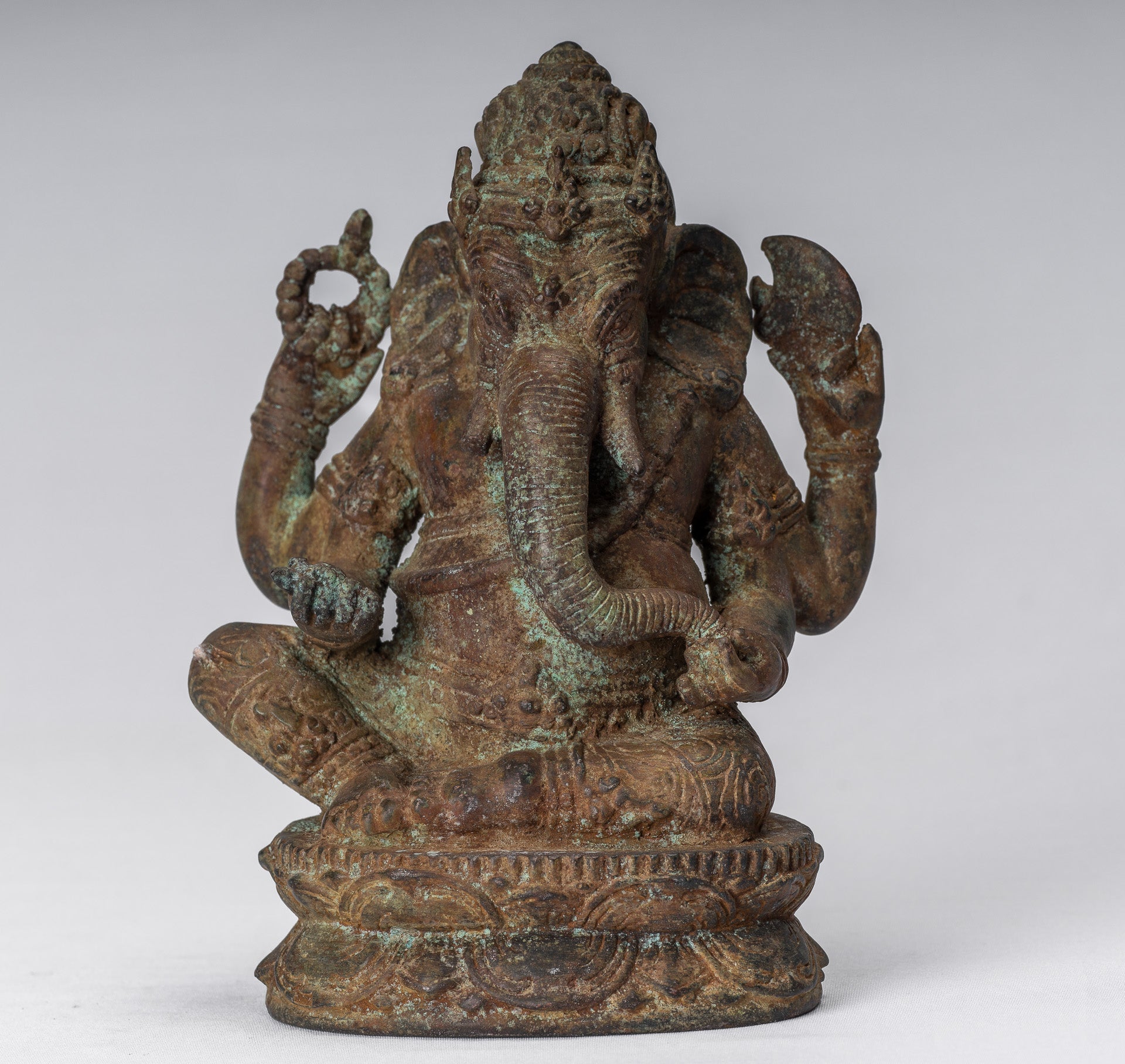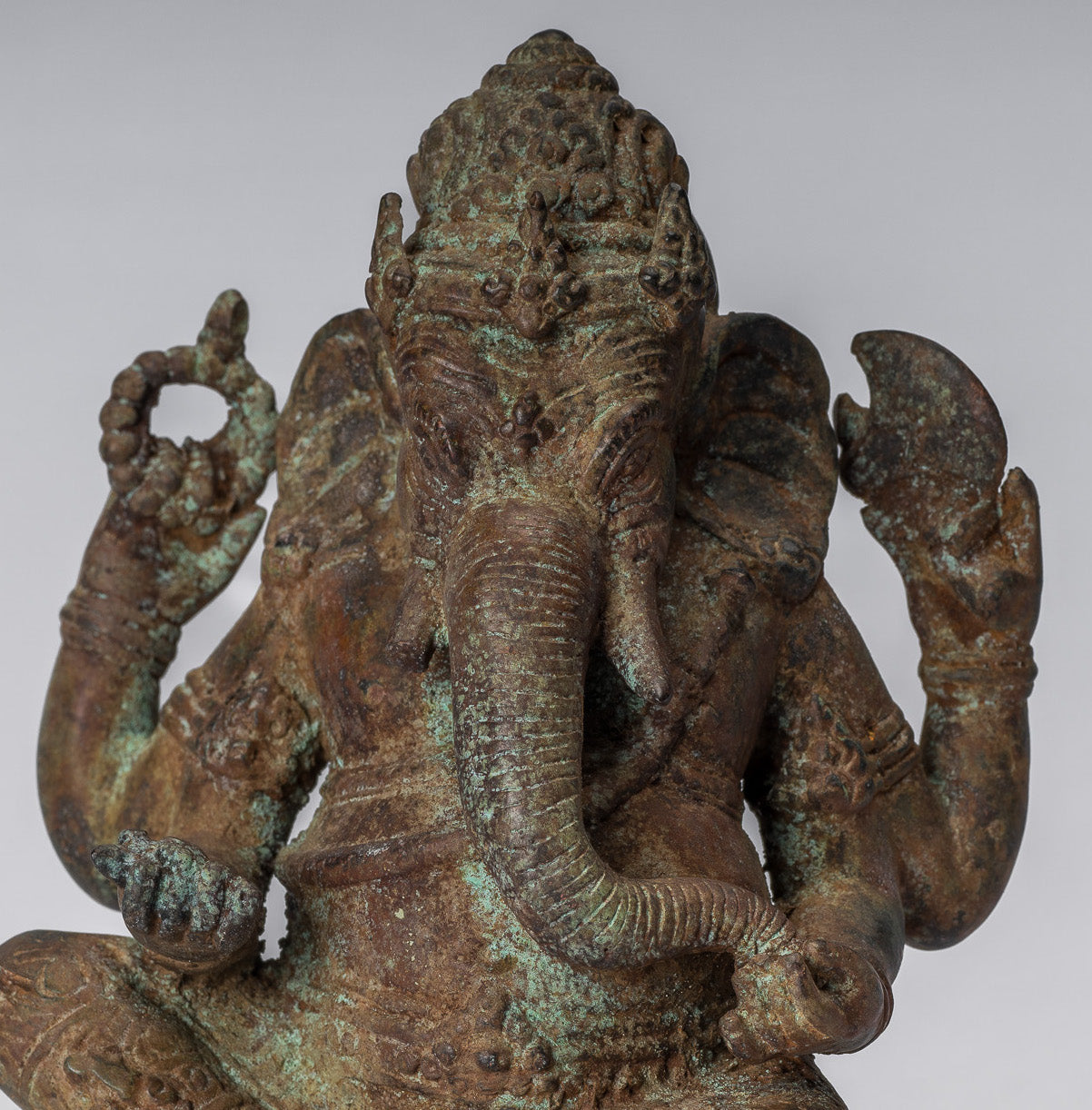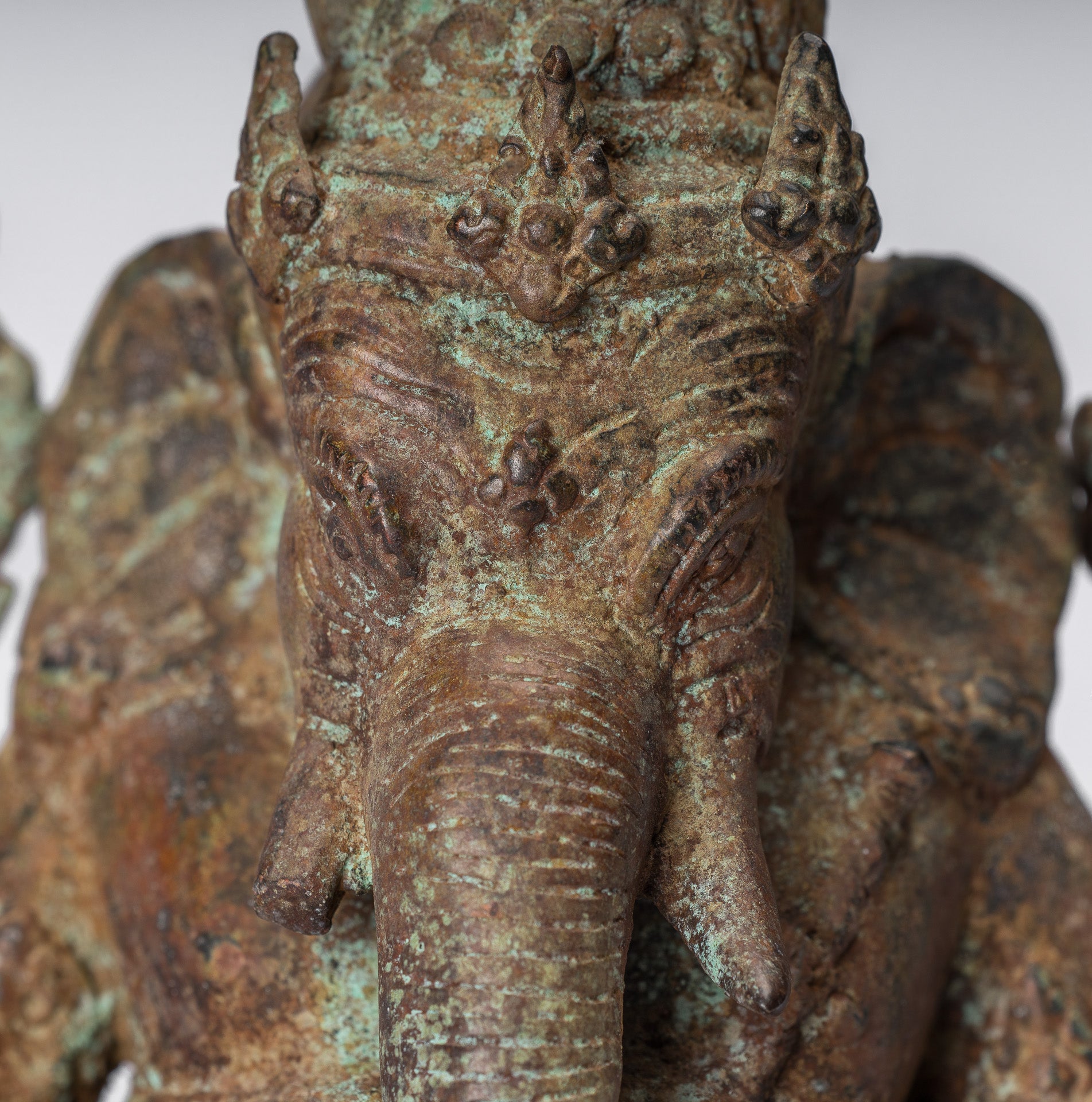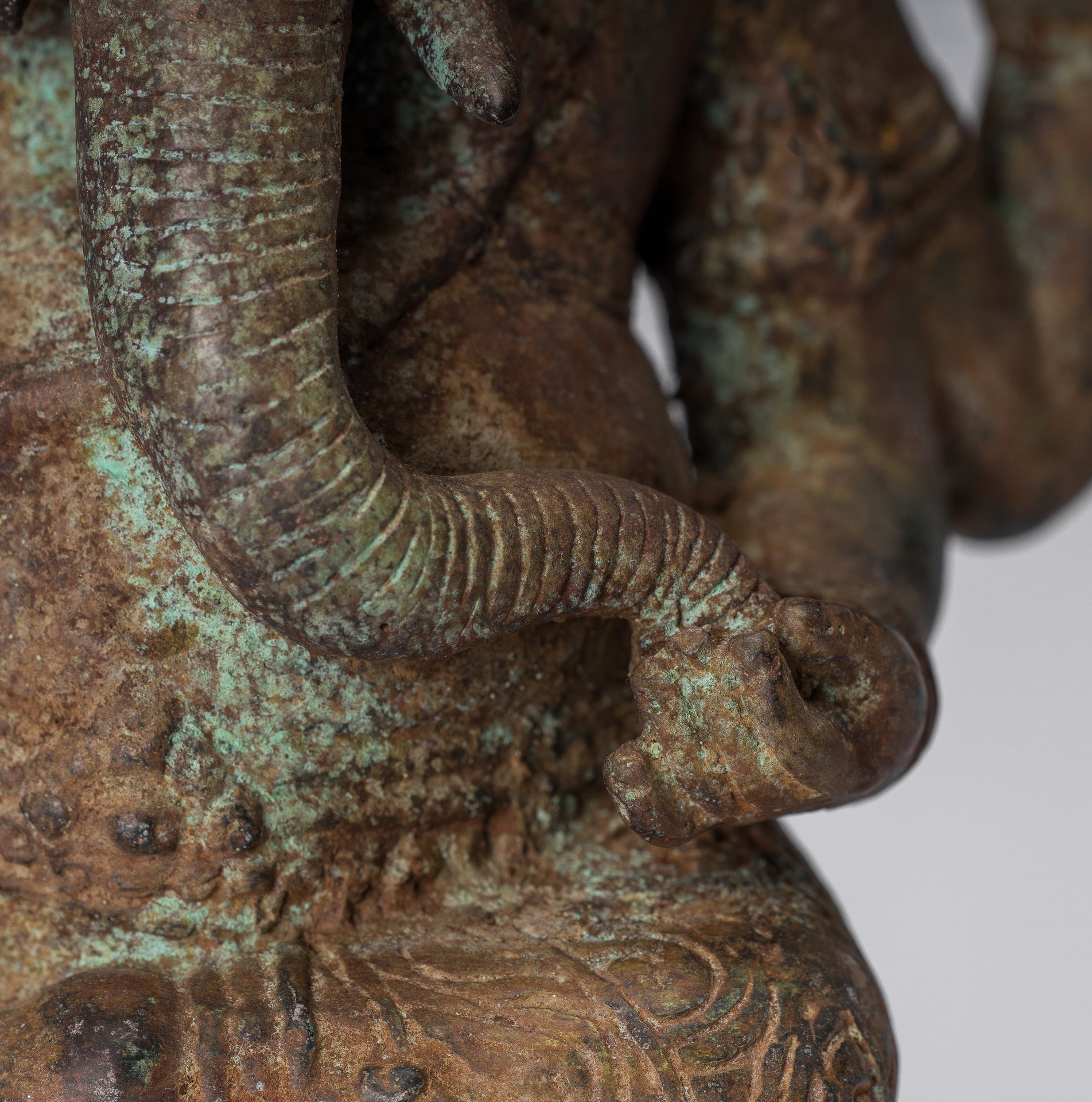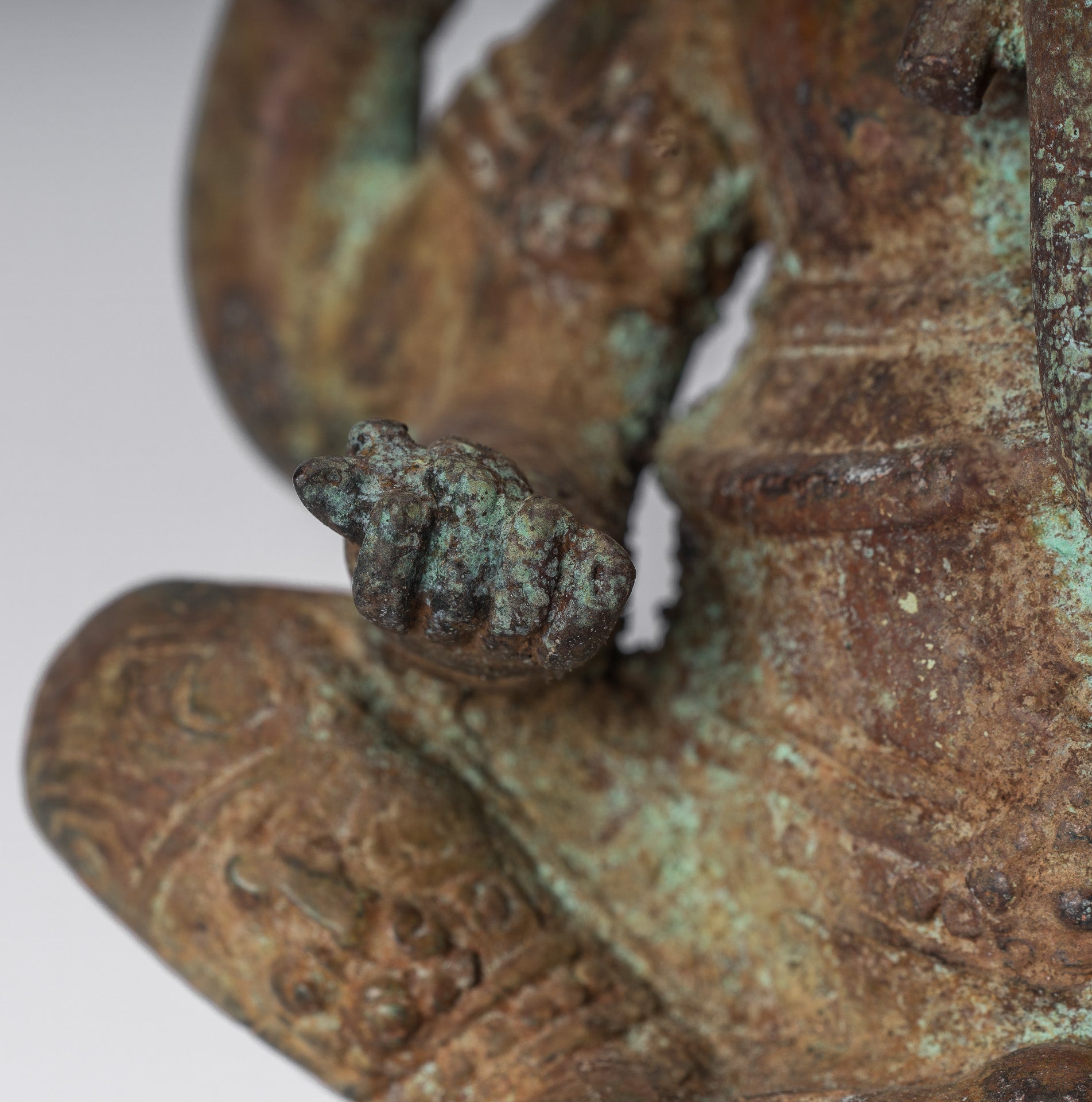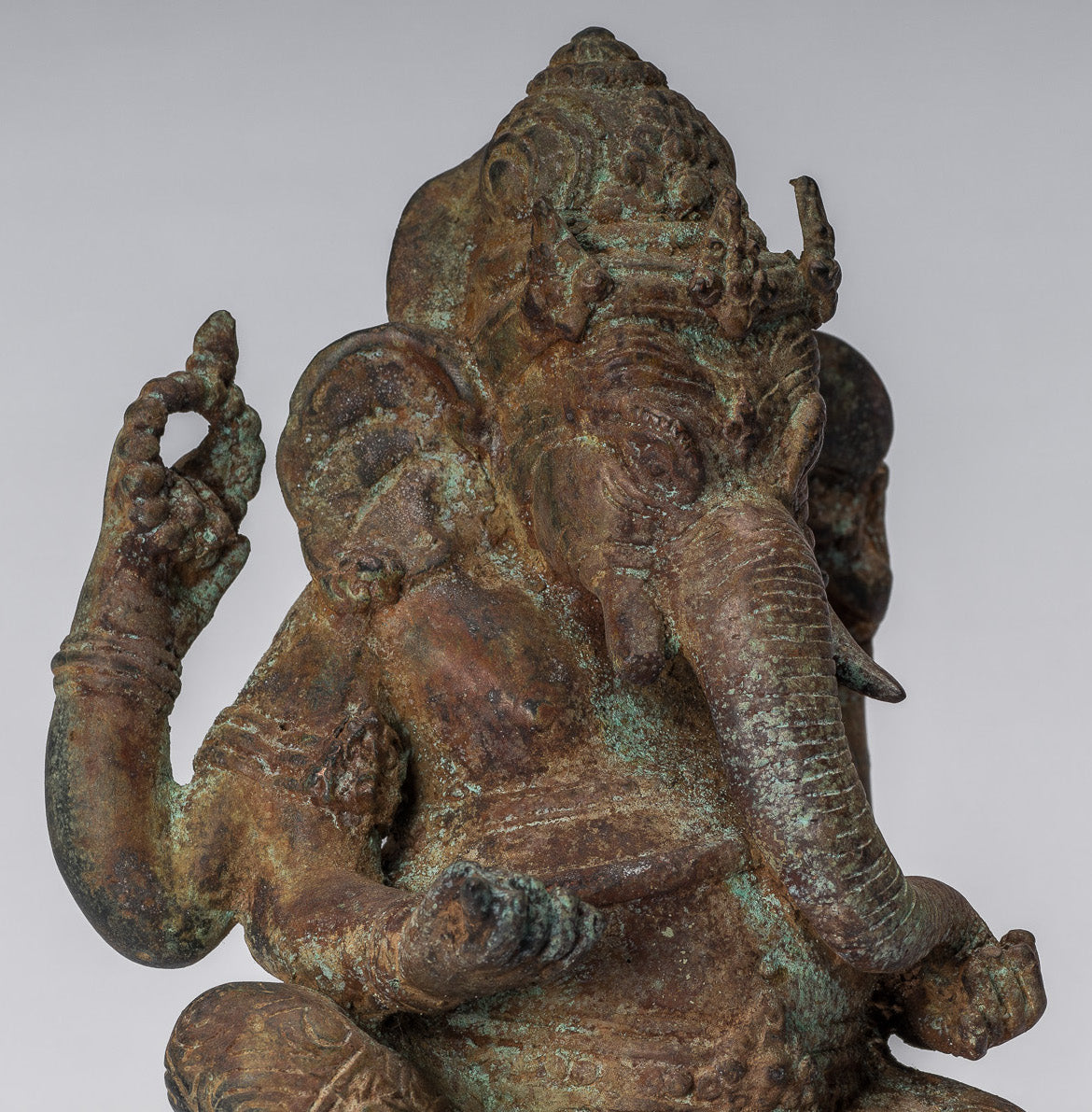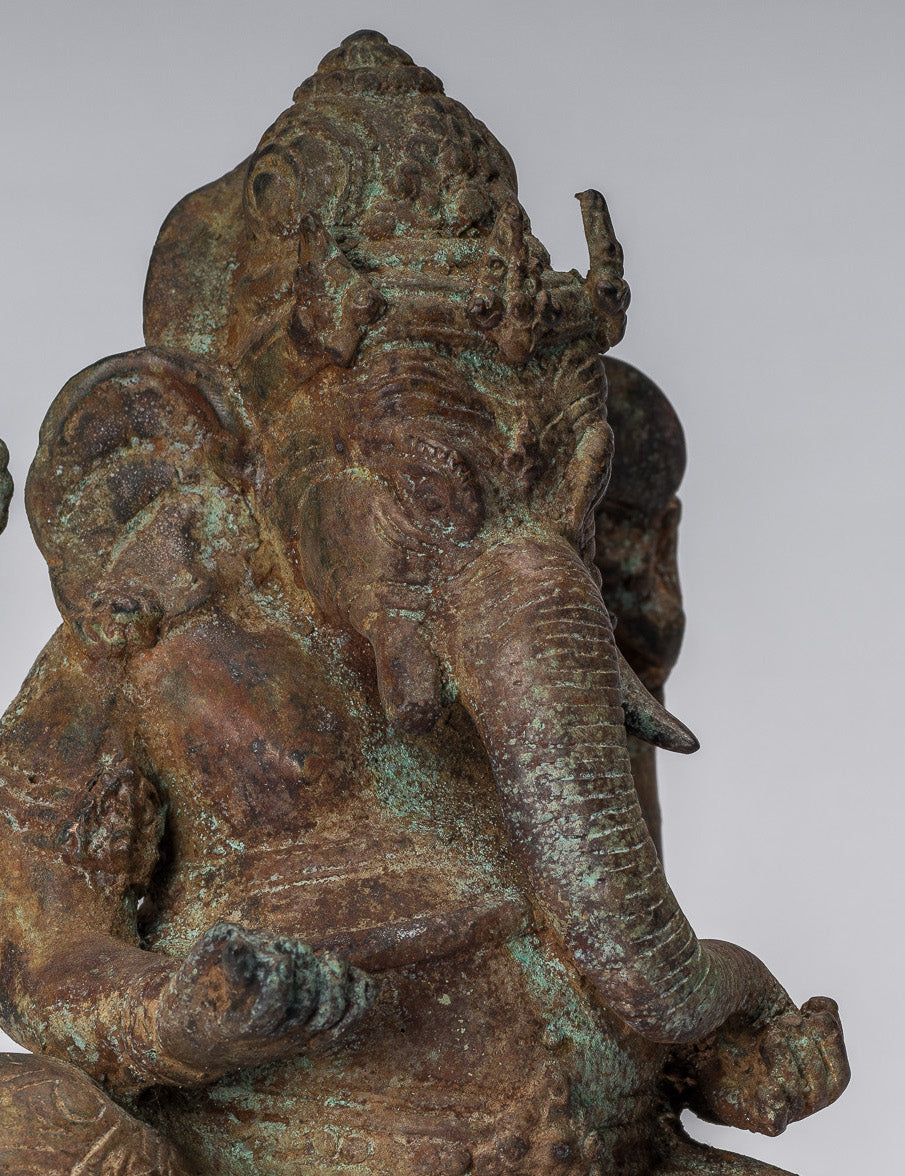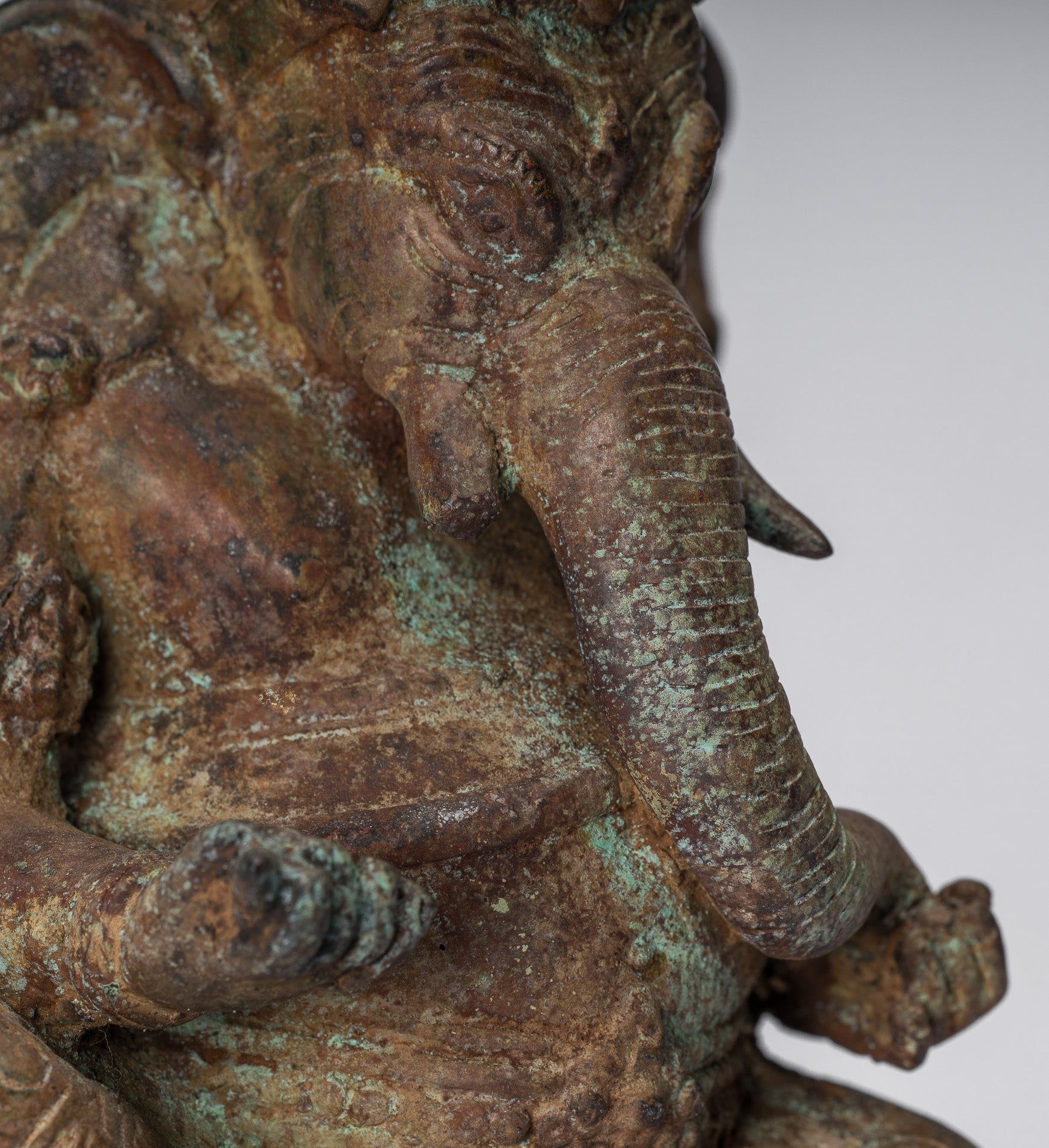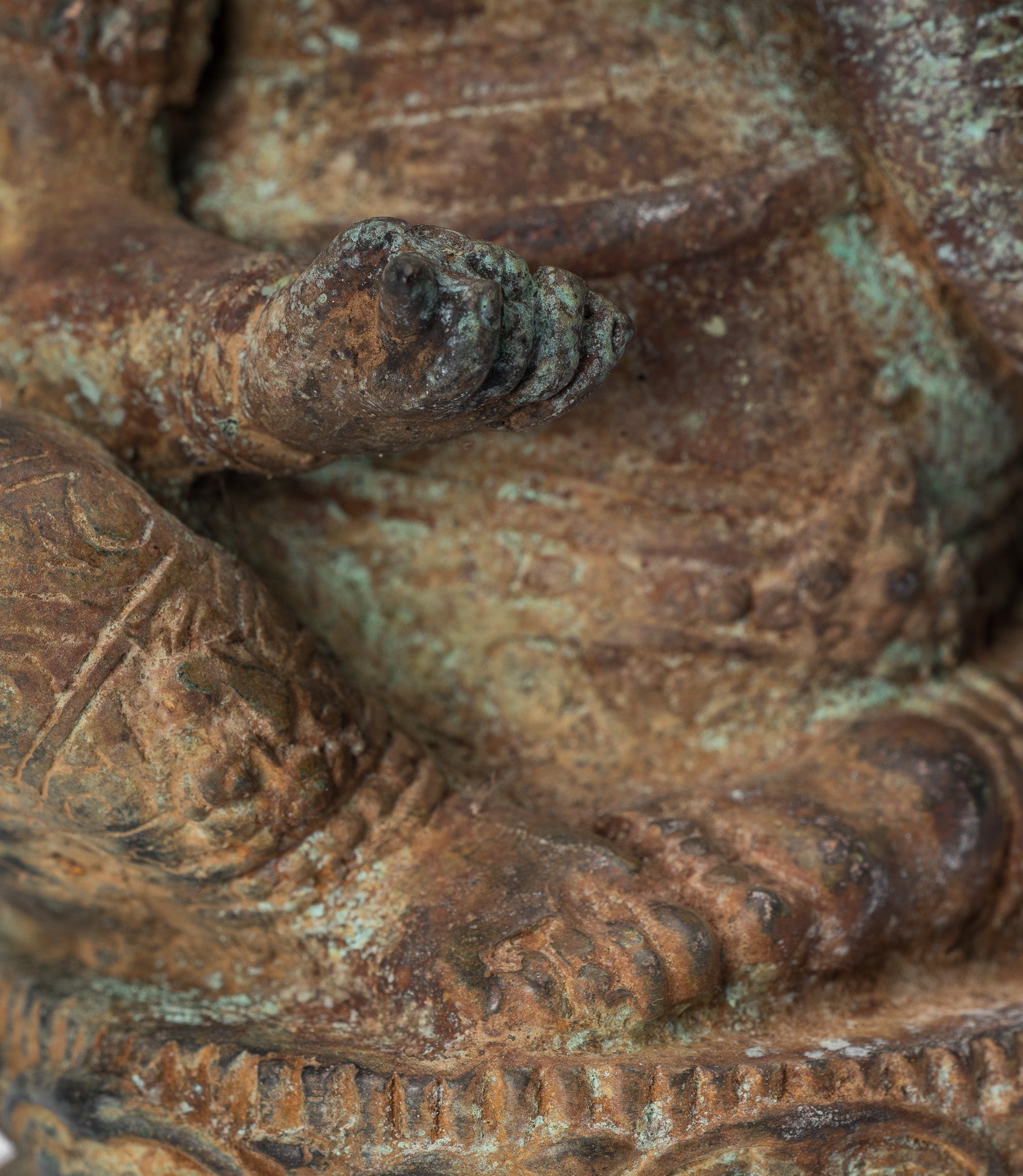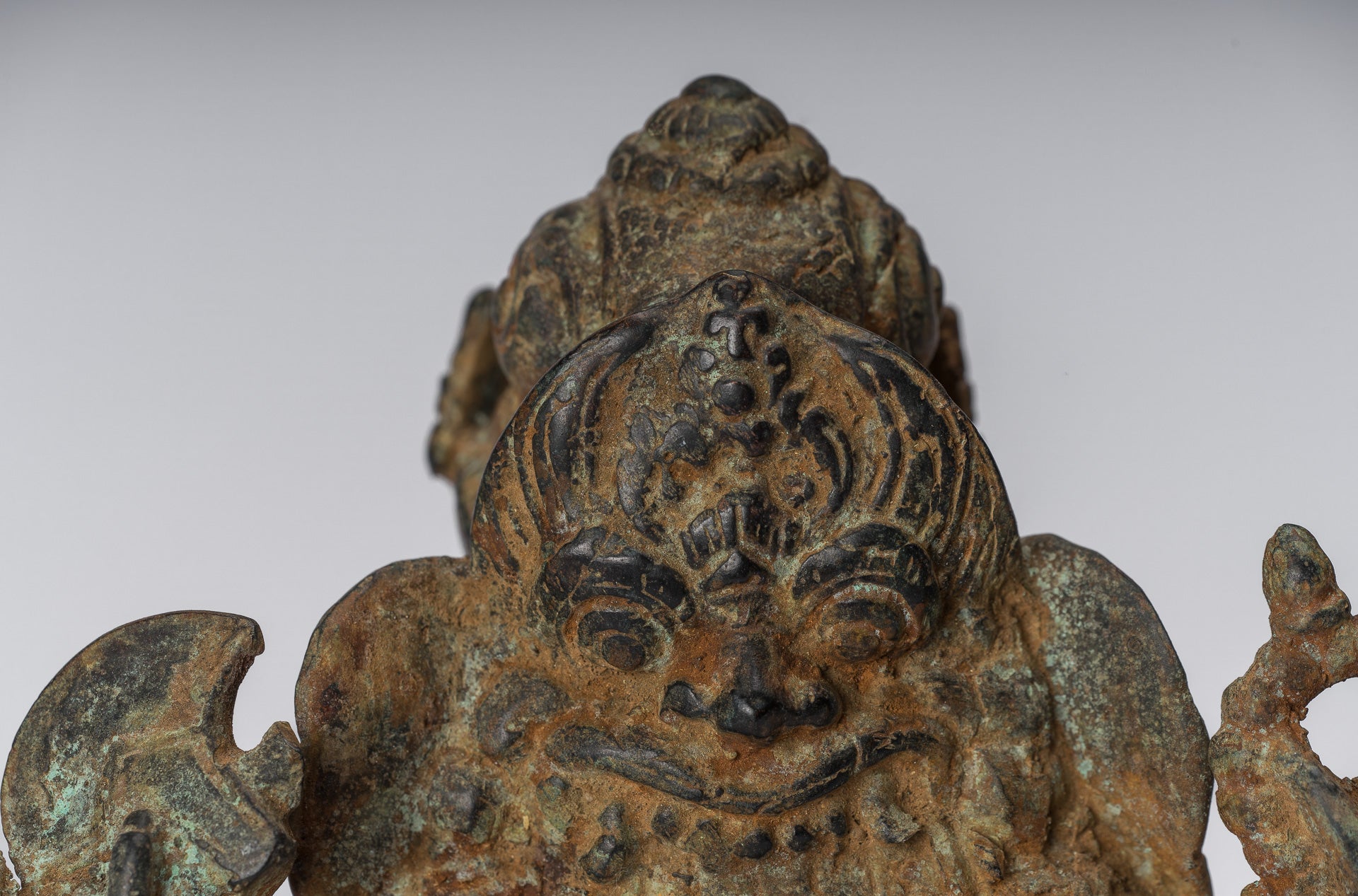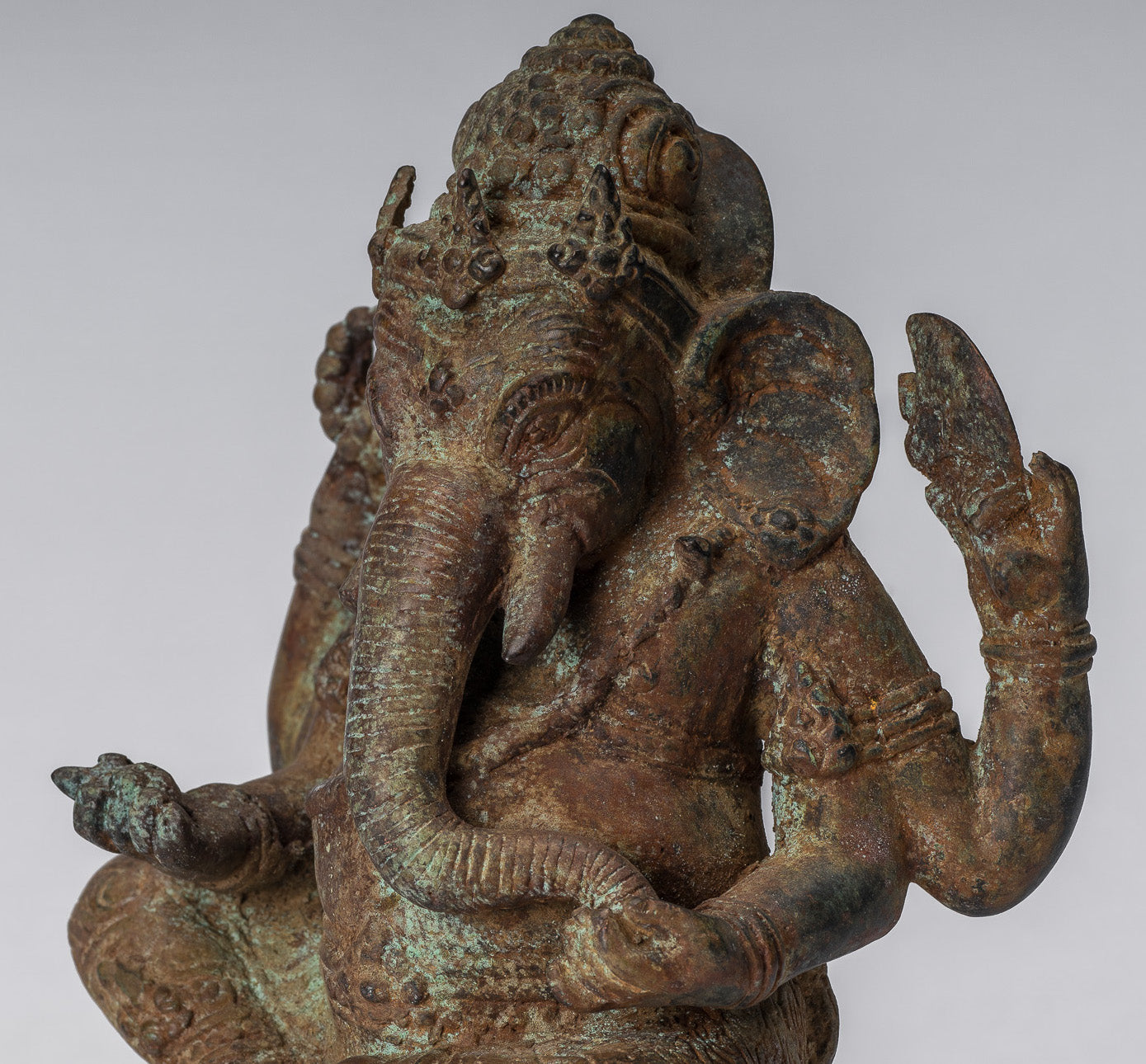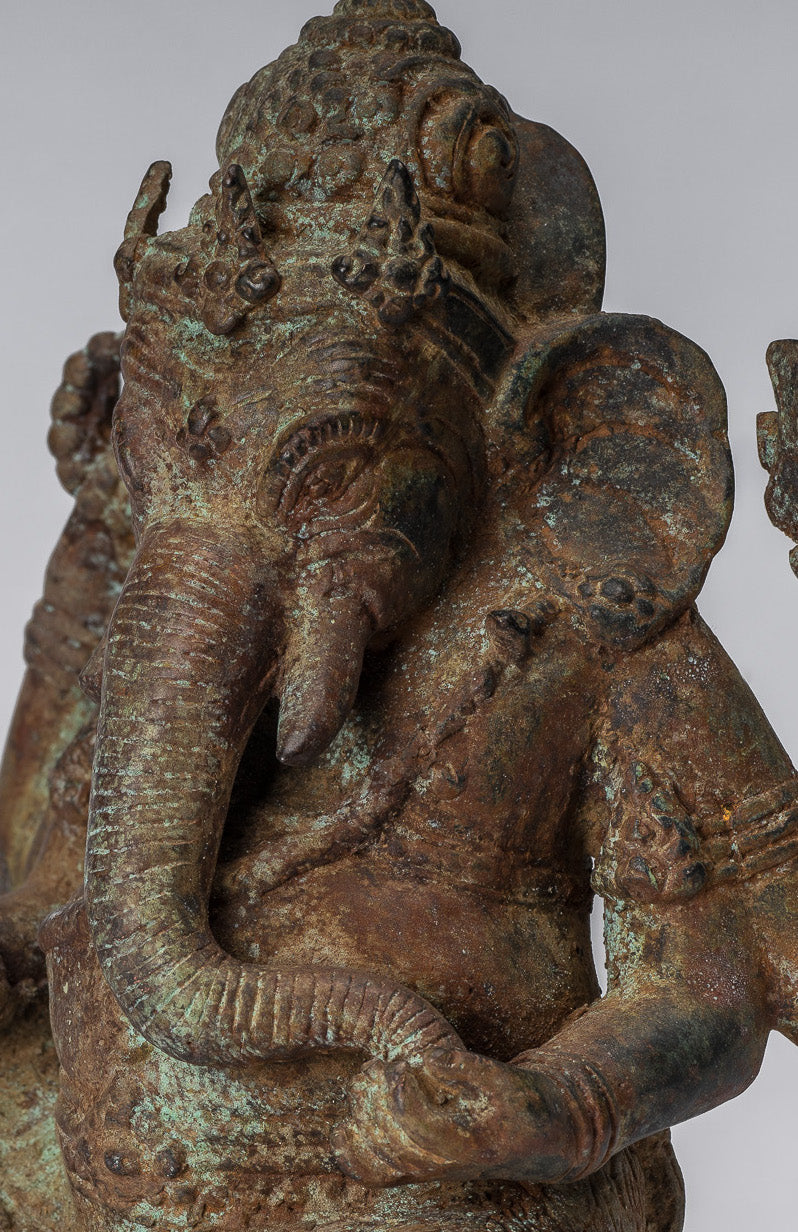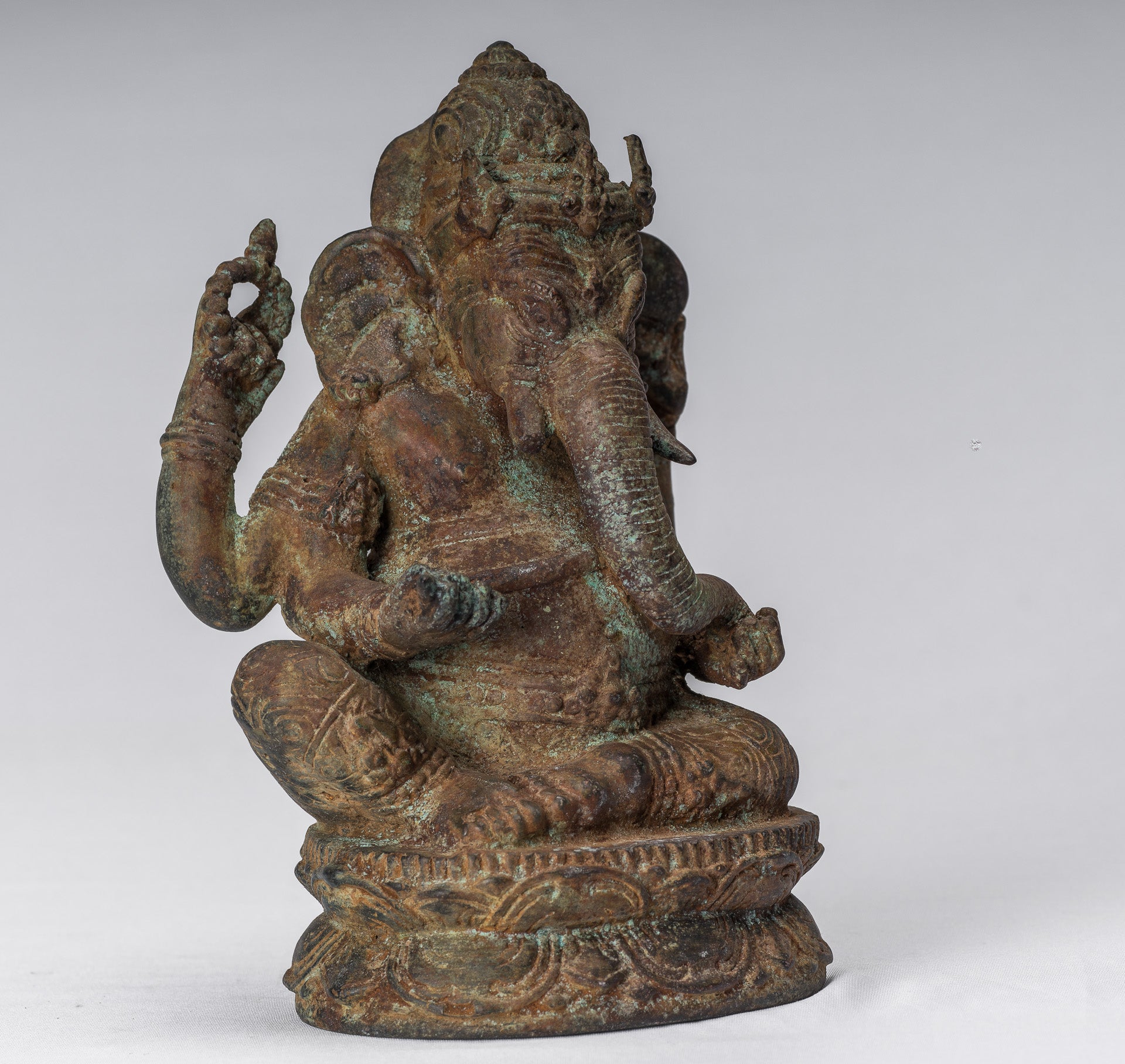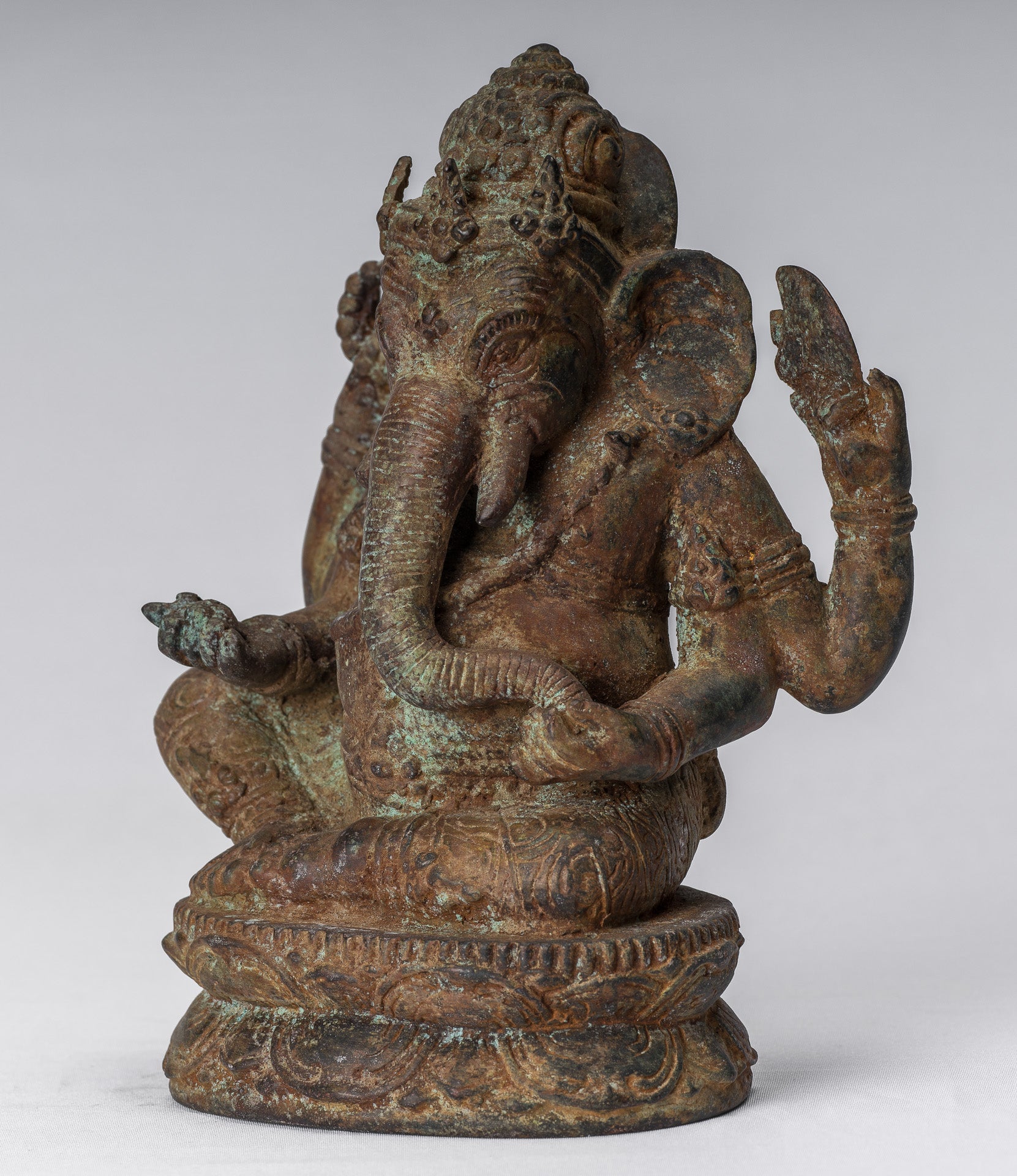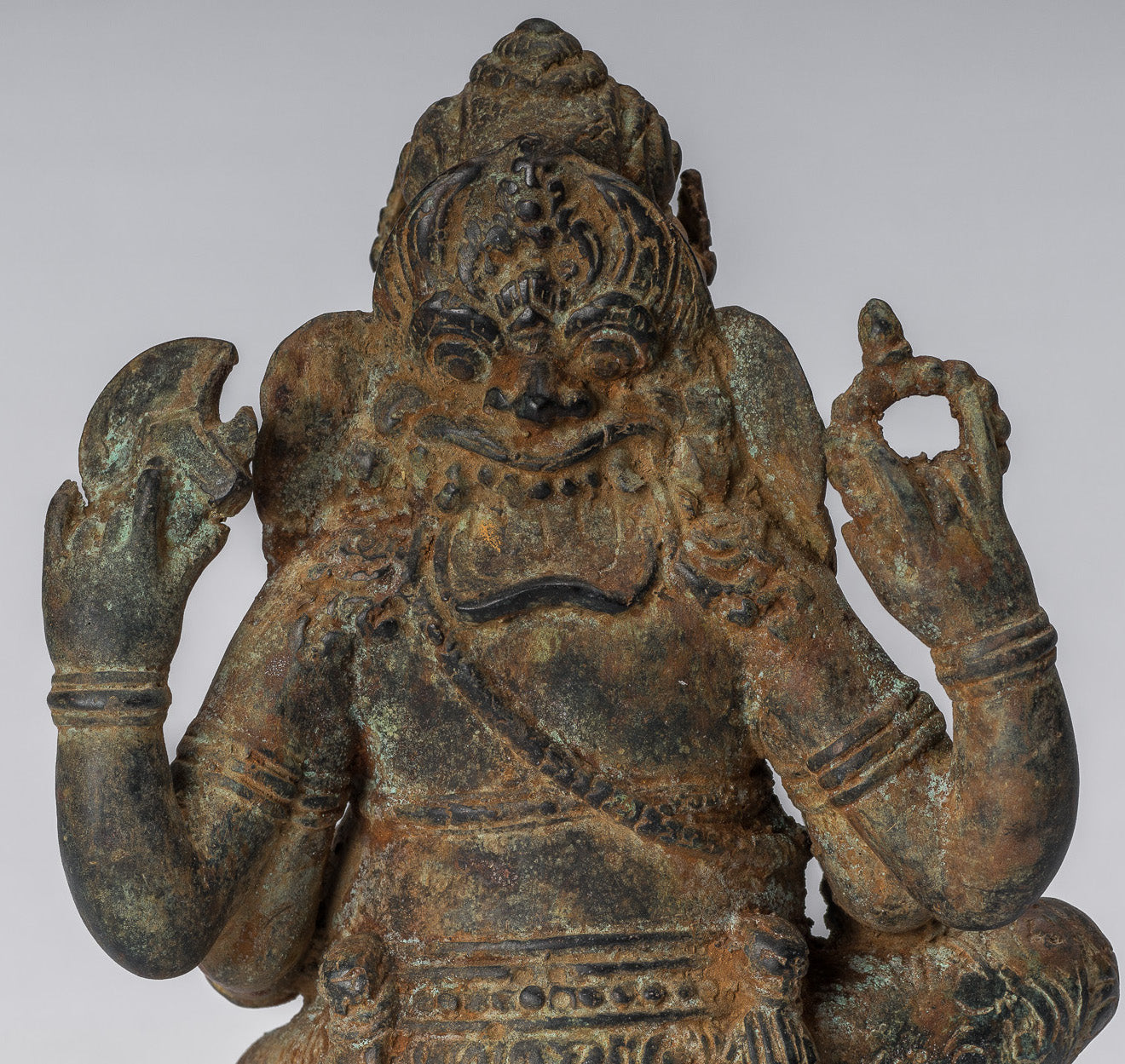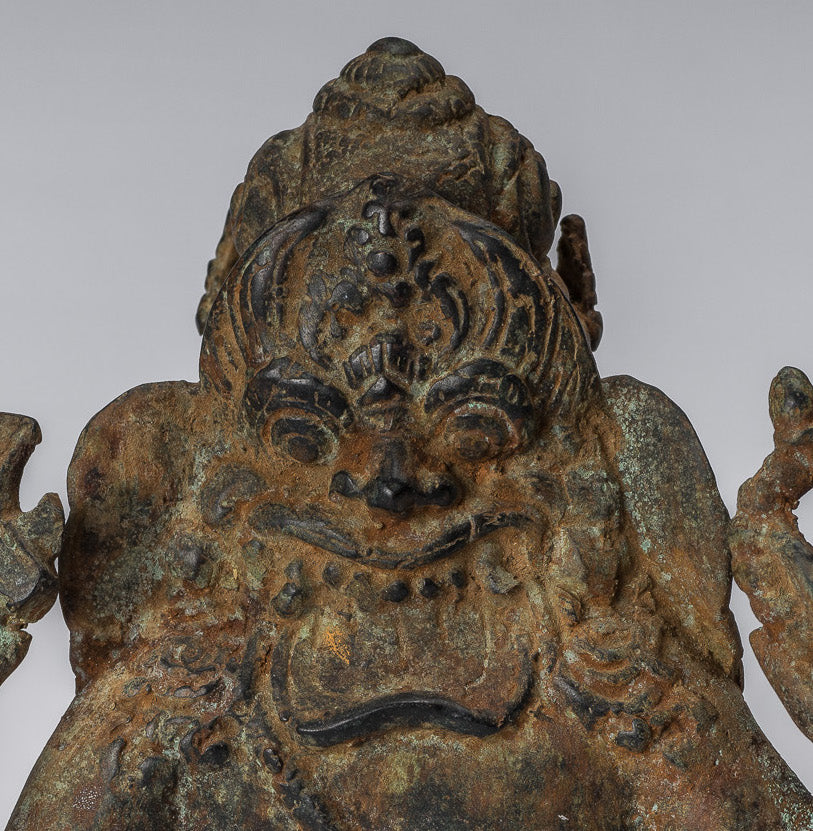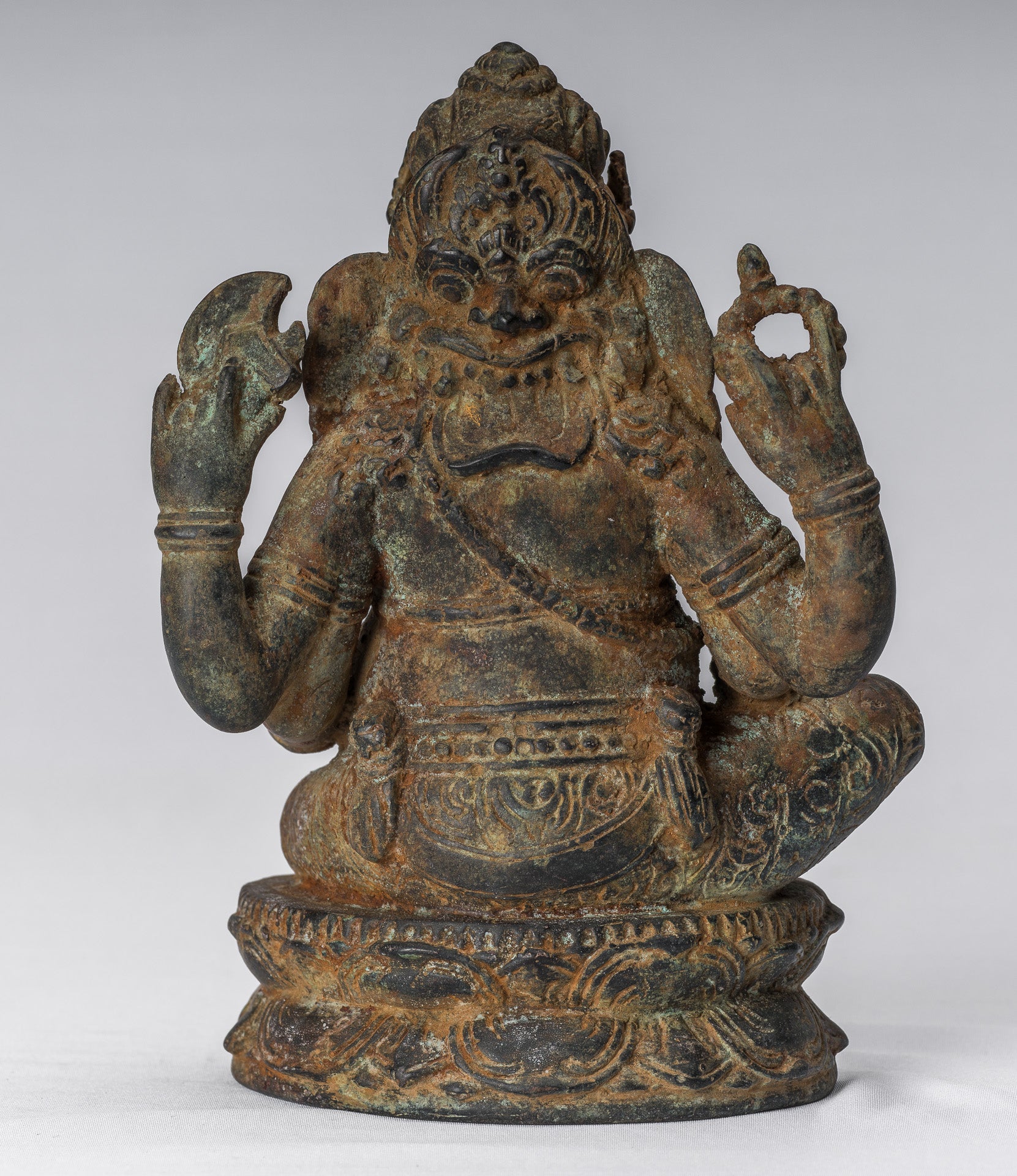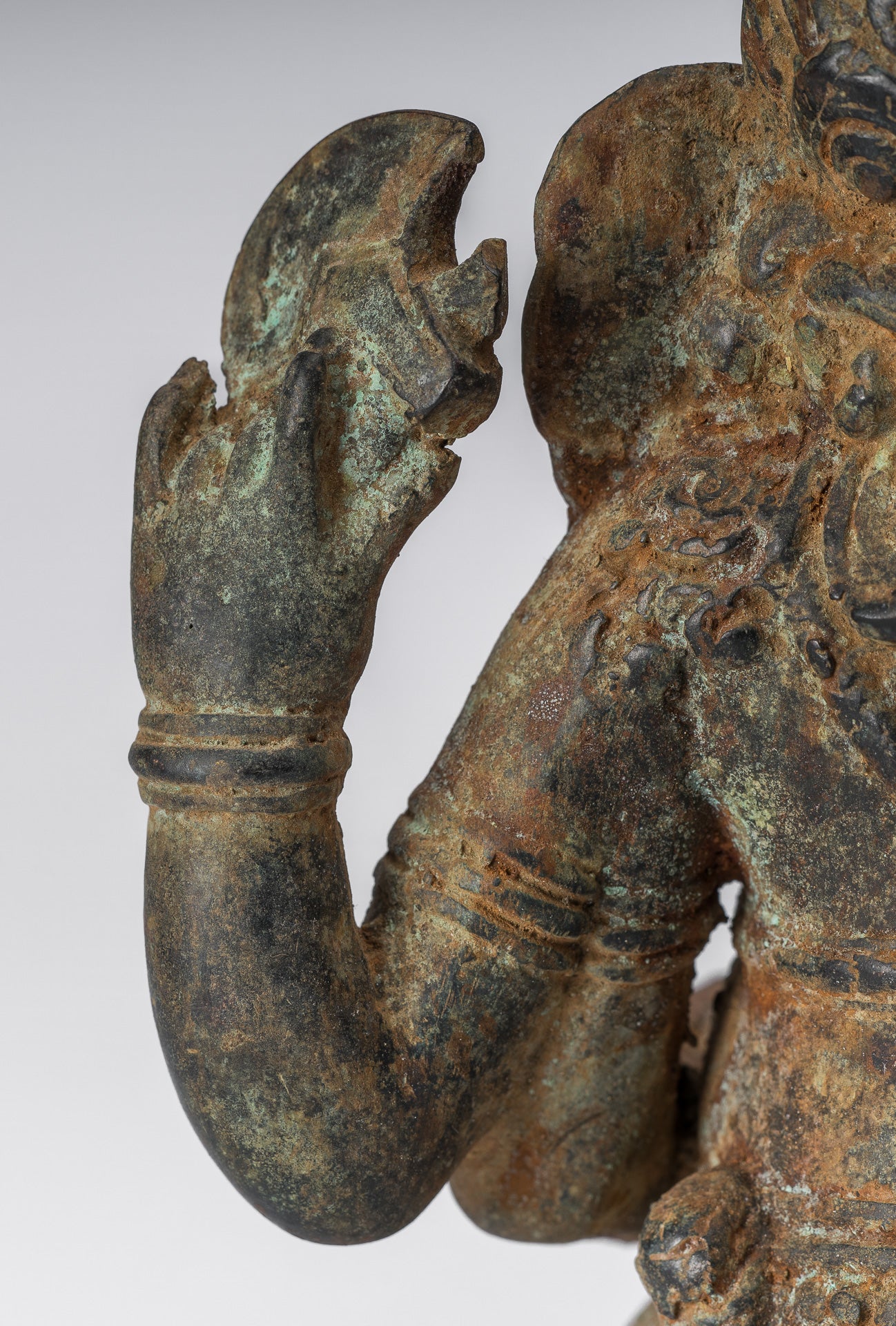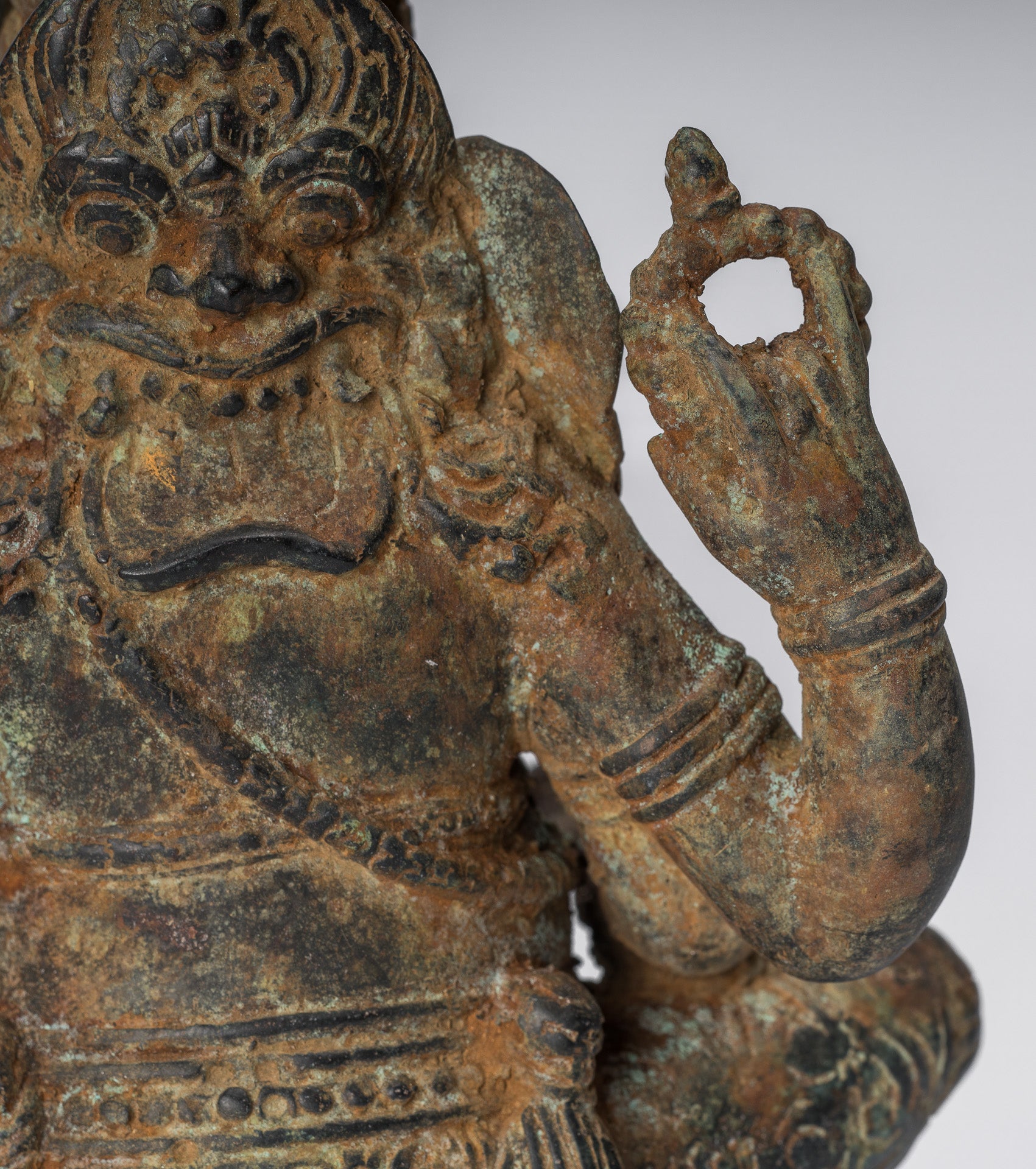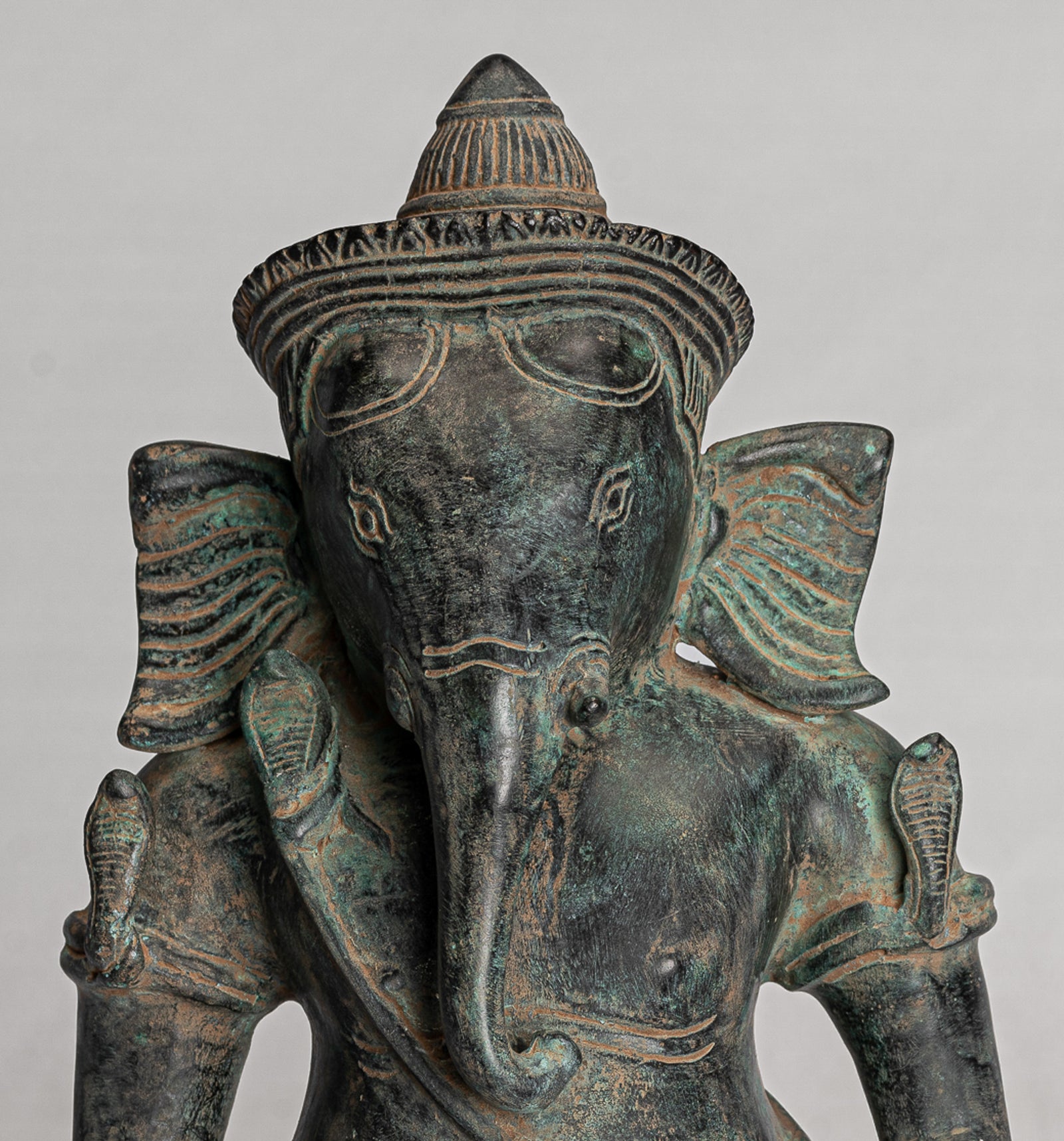-
Antique Javanese Style Bronze Seated Indonesian Ganesha Statue - 20cm/8"
Measures (Height) 20cm/8"
An antique Javanese style bronze Ganesha from Indonesia. Here Ganesha is seated panhandle on a double lotus leaf pedestal. The lotus flower represents purity, compassion and the giving of great joy to all. The distinctive patina of the piece is particularly delightful.
Ganesha is the elephant headed son of Shiva. He holds an axe in one hand, tusk, mala beads and a bowl of sweetmeats in his other hands.
Whilst an elephant-headed deity wielding an axe may inspire images of a belligerent warhead, rest assured these items represent something far more encouraging. Instead, these instruments are rooted in metaphor and promote the idea that we should cut away the obstacles before us. In destroying our vices and obstacles, be they certain hurdles in our lives or more abstract feelings such as jealousy and anger, we can source new beginnings and cultivate a new approach to the things that have been worrying us.
Ganesha also holds laddus, the name for Indian sweetmeats. Whilst some may interpret this as Ganesha simply having a sweet tooth or a (relatable) penchant for candy, it is no surprise that the sweet delicacies carry further meaning. These tasty treats represent the reward for a wisely-led life and the eternal sweetness that comes from a fulfilled experience. Dentists around the world will be delighted to hear that Ganesha is never depicted actually eating the sweetmeats, but this item of the deity does also show his parallels with everyday human life. This relates to Ganesha's status as a Vedic God, which means he does not forget even those who are not his devotees and instead looks out for everyone. This is communicated through his depiction as always looking upwards or at eye-level, as he is surveying all human life and is therefore not solely focussed on those praying to him.
Here Ganesha also holds the remnants of his broken tusk. The breaking of the tusk has several backstories. One instance suggests that it was shattered when Shiva cut the head off the elephant, prior to bestowing it onto Ganesha. Another writes that Ganesha's quill broke and he needed a writing instrument; try telling your boss that next time you try to write up a report with an elephant tusk because your computer crashed. Regardless of its multiple origins, the holding of the tusk represents less of a keepsake, and more of a depiction that our spirituality is more important than our outer bodies, meaning we must overcome the duality of the two as separate entities.
The direction of Ganesha's trunk has symbolic meaning. Here the trunk turns to Ganesha's left. This signifies the direction for success in the world. It is a position associated with grihastas, or householders.
Unusually, the image of a Yaksha can be seen on the rear of Ganesha.
The Yakshas are a broad class of nature-spirits, usually benevolent, but sometimes mischievous or capricious, connected with water, fertility, trees, the forest, treasure and wilderness. They appear in Hindu, Jain and Buddhist texts, as well as ancient and medieval era temples of South Asia and Southeast Asia as guardian deities.
In Hindu, Jain, and Buddhist texts, the yaksha has a dual personality. On the one hand, a yaksha may be an inoffensive nature-fairy, associated with woods and mountains; but there is also a darker version of the yaksha, which is a kind of ghost that haunts the wilderness and waylays and devours travellers, similar to the raksasas.
In his early forms in India, Ganesha was associated with fertility. Later he became widely revered as the Remover of Obstacles and more generally as Lord of Beginnings and Lord of Obstacles, patron of arts and sciences and the deity of intellect and wisdom.
Here Ganesha has a wonderful azurite and malachite patina
One of the most recognizable of the Asian deities this representation of Ganesha is sure to enlighten your home with endlessly timeless style.
SATISFACTION GUARANTEE - We have been offering SE Asian Art for many years and are proud of the reputation we have developed for fair and honest listings. However, if for any reason, whatsoever, you are unhappy with your purchase please just let us know and we will provide a full refund. We want you to be 100% happy with your purchase.
-
The majority of orders will be shipped with DHL. This is a secure, express and fully tracked service.
Items less than 2Kg we typically ship using Royal Mail.
Once we receive your order we try to ship all orders the same or next working day.
Large and/or fragile pieces requiring palletising, specialist crating and/or extra packaging may take a little longer. Palletised shipments will be delivered curbside.
All orders over 35 GBP will be shipped free of charge.

-
We genuinely hope that all purchases delight.
However, if they do not, regardless of reason, we will refund all orders upon receipt of the unwanted item. Just notify us within 14 days of receiving your order that you wish to make a return and send the piece back to us with 30 days of delivery.
The "Churning of the Sea of Milk" statue at Suvarnabhumi Airport is much more than an artistic marvel.
It embodies a timeless narrative of creation, balance, and unity, rooted in Hindu mythology and embraced by Thai culture.


